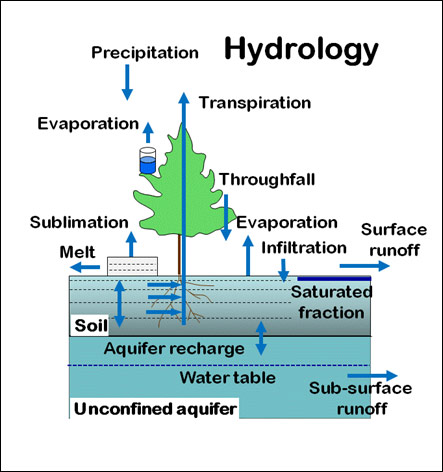CLM: Hydrologic Cycle
The hydrologic cycle over land in CLM includes representations of interception of precipitation by plant foliage and wood, throughfall and stemflow, transpiration, soil evaporation, canopy evaporation, infiltration, runoff, soil water, aquifer recharge, and snow. These are directly linked to the biogeophysics and also affect temperature, precipitation, and runoff. Total runoff (surface and sub-surface runoff) is routed downstream to oceans using a river transport model (RTM) that is synchronously coupled to CLM for hydrological applications as well as for improved land-ocean-sea ice-atmosphere coupling in the CESM.

CESM Project
The Community Earth System Model (CESM) is a fully-coupled, global climate model that provides state-of-the-art computer simulations of the Earth's past, present, and future climate states.
CESM is sponsored by the National Science Foundation (NSF) and the U.S. Department of Energy (DOE). Administration of the CESM is maintained by the Climate and Global Dynamics Laboratory (CGD) at the National Center for Atmospheric Research (NCAR).
CLM Overview
CLM Model Description
- Surface Heterogeneity
- Biogeophysics
- Hydrologic Cycle
- Biogeochemistry
- Human Dimensions
- Ecosystem Dynamics

